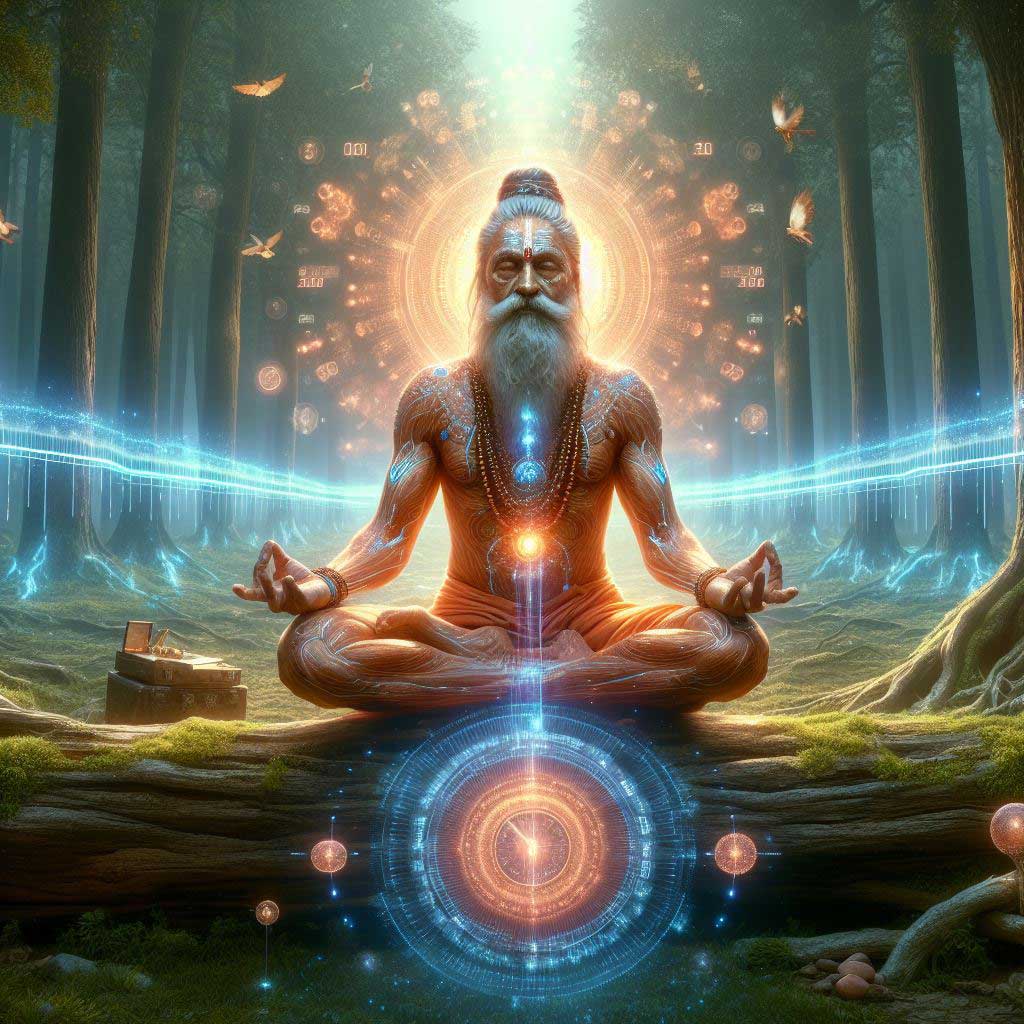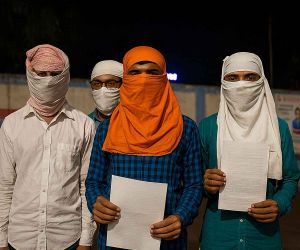MORE COVERAGE
Twitter Coverage
Satyaagrah
Written on
Satyaagrah
Written on
Satyaagrah
Written on
Satyaagrah
Written on
Satyaagrah
Written on
JOIN SATYAAGRAH SOCIAL MEDIA
"Each era, a stitch in time's tapestry": India's ancient timeline - From Svayambhuva Manu to the Mahabharata, new research using archaeo-astronomy redefines historical chronology, challenging established epochs and reshaping our understanding of the past

Indian historical tradition reckons the chronology from Svayambhuva Manu to the Mahabharata era in terms of the elapsed number of Manvantaras and Mahayugas (Chaturyugas). It is recorded that six Manvantaras and the Dvapara Yuga of the 28th Mahayuga of the seventh Manvantara had elapsed during the Mahabharata era.
|
Though the 5-year Yuga calendar continued to be in vogue starting from the early Vedic era to the Mahabharata era, the duration of a Yuga and a Chaturyuga were increased from 5 years to 1200 years and from 20 years to 4800 years respectively at the end of the 28th Krita Yuga. Later, the duration of a Chaturyuga was again increased from 4800 years to 12000 years considering the differential duration of four Yugas in a ratio of 4:3:2:1.
During the pre-Mahabharata era, ancient Indian astronomers further extended the duration of a Yuga from 1200 years to 432000 years (1200 times 360) and the duration of a Chaturyuga from 12000 years to 4320000 years (12000 times 360) with the objective of achieving accurate calendrical calculations.
Unfortunately,those scholars who later updated the Puranas had erroneously deemed the increased calendrical duration of Chaturyugas as a given fact, and on that basis, narrated the chronological history of ancient India, resulting in, since antiquity, the loss of the true chronology from Manu to Mahabharata.
The research found that the epoch of the end of the 28th Krita Yuga of the Vaivasvata Manvantara would be the strongest basis, if it is accurately established, to retrieve that lost chronology. latadeva, a disciple of Aryabhata provides verifiable astronomical details of the epoch of the Kritayuganta in his Surya Siddhanta.
According to him, Mayasura wrote Surya Siddhanta at the end of the 28th Krita Yuga when all five planets, the sun and the moon were in a perfect conjunction in Mesa Rasi (Aries) on Chaitra Sukla Pratipada. This research is able to determine that this rarest of conjunctions occurred on 22nd Feb, 6778 BCE, leading to the accurate fixing of the epoch of the beginning of the 28th Treta Yuga as 6777 BCE.
The duration of the Treta Yuga was only 1200 years because the duration of a Yuga was extended from 5 years to 1200 years in 6777 BCE. After the end of the 28th Treta Yuga, the differential duration of four Yugas was introduced; therefore, the duration of the 28th Dvapara Yuga was 2400 years. As the duration of a Yuga, before 6777 BCE, was only five years, This research is able to establish the epoch of the early Vedic Yuga calendar as being around 15962 BCE. In this manner, the chronology has been reconstructed in this book, from the time of Svayambhuva Manu to the Mahabharata era based on the verifiable archaeo-astronomical references found in Vedic literature and Post-Vedic literature - the Ramayar:ia, the Mahabharata and the Puranas.
rior to the colonial era, Indians traditionally followed a well-established chronological history as narrated in the Puranas starting from the Mahabharata era to the Gupta period. The regnal periods of the Brihadratha, Pradyota and Sisunaga dynasties of the Magadha Empire given in the Puranas clearly indicate that Mahapadma Nanda founded his Nanda dynasty 1500 years after the Mahabharata war.
 |
Evidently, the traditional chronology places Buddha in the 19th century BCE and Chandragupta Maurya in the beginning of the 16th century BCE. Colonial historians identified Sandrokottus with Chandragupta Maurya and dated him as the contemporary of Alexander and the date of Buddha nirvana has been brought forward by 1380 years and fixed around 483 BCE.
In fact, the complex problems in Indian chronology arise from a misunderstandingof the epochs of ancient Indian eras. I have discovered that the Kurtakoti copper plate dated Saka 530 refers to a total solar eclipse occurred on 9th May 53 BCE in Northern Kamataka which conclusively establishes that the Saka era commenced in 583 BCE and the Sakanta era commenced in 78 CE. Historians mistakenly mixed up these two epochs which led to a chronological error of 660 years. Out of two contemporary copper plates found at Pranaveshvara temple, Talagunda, one plate is dated in the Saka era whereas, another is dated in the Sakanta era.
Apart from this error of 660 years, later Jain historians inadvertently identified Ujjain King Chandragupta, a disciple of Bhadrabahu with the Maurya King Chandragupta which made Mahavira, a contemporary of Buddha. In reality, Buddha attained nirvana 675 years before the year of Mahavira nirvana. Puranas and the Burmese inscriptions clearly indicate that Buddha attained nirvana in 1864 BCE. Recent excavations at Lumbini and the radiocarbon samples collected from the Trench CS at the center of the Buddhist shrine at Lumbini indicate an earliest date of 1681BCE.
Thus, there is a chronological error of 1380 years in dating of Buddha nirvana due to mixing up of two different epochs of Saka and Sakanta eras and the mistaken identification of Chandragupta, the disciple of Bhadrabahu. The dating of Buddha nirvana in 1864 BCE also validates the traditional date of Adi Sankaracharya in the 6th century BCE.
The present research work is completely based on the comprehensive study of the chronological content of the inscriptions. This research has discovered the exact epochs of various ancient Indian eras that conclusively uphold the authenticity of the Puranic chronology and expose the fallacy of the chronology given in the modem textbooks of Indian history.
There is a serious need to re-write the entire history of ancient India with reference to the newly discovered epochs of the ancient Indian eras.
Chronology is the undeniable underpinning in the chronicling of history, and it is axiomatic that an unquestionable baseline is the absolute bedrock of chronology. Establishing the true baseline is the principal prerequisite in the reconstruction of chronological history and the lack of one may lay us open to error. To illustrate, historians with absolute belief that the epoch of the Christian era (1 CE) is the firm baseline of world chronology have failed miserably in establishing the exact dates of the first dynasty of Babylon and the fall of Babylon. This is apparent from the fact that the reign of Hammurabi has been dated in five different chronologies: 1933-1890 BCE, 1848-1806 BCE, 1792-1750 BCE, 1728-1686 BCE or 1696-1654 BCE and similarly, the fall of Babylon has been variously dated as 1736 BCE, 1651 BCE, 1595 BCE, 1531BCE or 1499 BCE.
This inconsistency in determining the exact chronology of the Hammurabi dynasty and other instances is a clear indicator that the epoch of the Christian era does not qualify to be the firm baseline of world chronology. The Venus Tablet of King Ammisaduqa found in Babylon offers independently verifiable astronomical evidence but unfortunately, world historians have markedly failed to fix the exact date of the Venus Tablet because of the blind assumption of 1 CE as the epoch of the birth of Jesus Christ without presenting any independently verifiable evidence.
Fixing the exact dates of ancient historical events with precision is indeed an arduous and herculean undertaking but this research has now conclusively established the exact dates of the Venus Tablet based on archaeo-astronomical evidence. Thus, the reign of King Ammisaduqa can be exactly dated to 2473-2453 BCE, the reign of Hammurabi to 2619-2578 BCE and the fall of Babylon can also be fixed as 2418 BCE.
 |
The archaeo-astronomical evidence of the Venus Tablet, which accurately and independently establishes the date of King Ammisaduqa, the fifth successor of Hammurabi, will qualify to be the true baseline of the chronology of ancient Western kingdoms.
Accordingly, my book argues that there is a genuine need to reconstruct Western chronology up to Augustus without referring to the epoch of the Christian era. In fact, eminent historians of the Western world have incorrectly assumed the fictitious epoch of the Christian era {l CE) as the unquestionable baseline and reconciled the chronology of world history in antithesis to the traditional chronology of ancient civilisations, resulting in numerous irresolvable chronological quandaries.
Illustrating with documented evidence and verifiable facts, this research has traced the complete chronology of Western kingdoms from ancient times to the fall of the Byzantine Roman Empire. If the date of the Venus Tablet as the baseline were to be unanimously accepted, all the chronic problems of the chronology of world history can be satisfactorily resolved.
References:
Vedveer Arya is a civil servant and a senior officer from Ministry of Defence. He is a Sanskrit scholar and a researcher with profound insights in the chronological history of India. He made an in-depth study of various epigraphs in original and critiqued the chronology of India put forth by colonial historians and their followers.
 Support Us
Support Us
Satyagraha was born from the heart of our land, with an undying aim to unveil the true essence of Bharat. It seeks to illuminate the hidden tales of our valiant freedom fighters and the rich chronicles that haven't yet sung their complete melody in the mainstream.
While platforms like NDTV and 'The Wire' effortlessly garner funds under the banner of safeguarding democracy, we at Satyagraha walk a different path. Our strength and resonance come from you. In this journey to weave a stronger Bharat, every little contribution amplifies our voice. Let's come together, contribute as you can, and champion the true spirit of our nation.
 |  |  |
| ICICI Bank of Satyaagrah | Razorpay Bank of Satyaagrah | PayPal Bank of Satyaagrah - For International Payments |
If all above doesn't work, then try the LINK below:
Please share the article on other platforms
DISCLAIMER: The author is solely responsible for the views expressed in this article. The author carries the responsibility for citing and/or licensing of images utilized within the text. The website also frequently uses non-commercial images for representational purposes only in line with the article. We are not responsible for the authenticity of such images. If some images have a copyright issue, we request the person/entity to contact us at satyaagrahindia@gmail.com and we will take the necessary actions to resolve the issue.
Related Articles
- "Behold it is born. It is already sanctioned by the blood of martyred Indian youths": Madam Bhikhaiji Cama, the Brave lady to first hoist India’s flag on foreign Soil - Formative Years
- “Abuses of the University”: Professor Berube described University as “the final resting place of the New Left,” said those who failed to regard “feminist or queer theory as a legitimate area of scholarship”—were only perpetuating “ignorance and injustice
- "Purpose of creation of man, according to Islam, is that he should worship Allah": As there is one Allah, one Guide, one Book, there is also one Prayer, caught and fixed in a single formula, Islam has all ideological ingredients of imperialism in any age
- The Emergency: JP recited Dinkar evocative poem, ‘Singhasan khaali karo, ke Janata Aati hai’, Harvard-returned Subramanian Swamy and member of Rajya Sabha presciently speculated, ‘What if Mrs. Gandhi introduced martial law’
- “No one wants to be easy to get over. That’s what mind games are for”: Prof Derrick Bell at New York University School of Law was godfather, of “Critical Race Theory,” an academic tradition in which race plays same role as a class in the Marxist paradigm
- Professor M. Shahid Alam, Northeastern University: The 101 Most Dangerous Academics in America
- Historian with Communist glasses: When Pandit Nehru rose to unrivalled power and position in India his book 'Glimpses of World History' was recommended as a reliable reference work for advanced students of history in Indian universities
- “Who says exactly what they’re thinking? What kind of a game is that?”: Committed Marxist, Prof. Berlowitz teaches “resistance” as in, “Privatization must be resisted,” - only a Marxist could make the connection between resisting privatization and peace
- Purification - Understanding Islam through Hadis - Religious Faith or Fanaticism
- Introduction - Understanding Islam through Hadis - Religious Faith or Fanaticism
- "How history was cooked up for Nalanda University": Story behind a Marxist historian accounts of its destruction by ‘Hindu fanatics’, and why no self-respecting Marxist could have rested this on just one miracle of acquiring 'sidhis' and 'raining fire'
- Professor of Political Science at Columbia University, Professor Lisa Anderson regards America’s wars of liberation in Afghanistan and Iraq as “an assault on the entire region”: The 101 Most Dangerous Academics in America
- Professor Hamid Algar, University of California, Berkeley: The 101 Most Dangerous Academics in America
- "Hindu school of History needed": A call for a new narrative amidst Diverse Historical Interpretations, contrasting views of Communist Historians and Aligarh Apologists, to provide a comprehensive understanding of medieval India's intricate past
- A Strange New World - Road was clear for Indira Gandhi, nothing could stop her and there seemed no opposition to her regime, 'The New York Times' marvelled at how the JP movement had just melted away

























